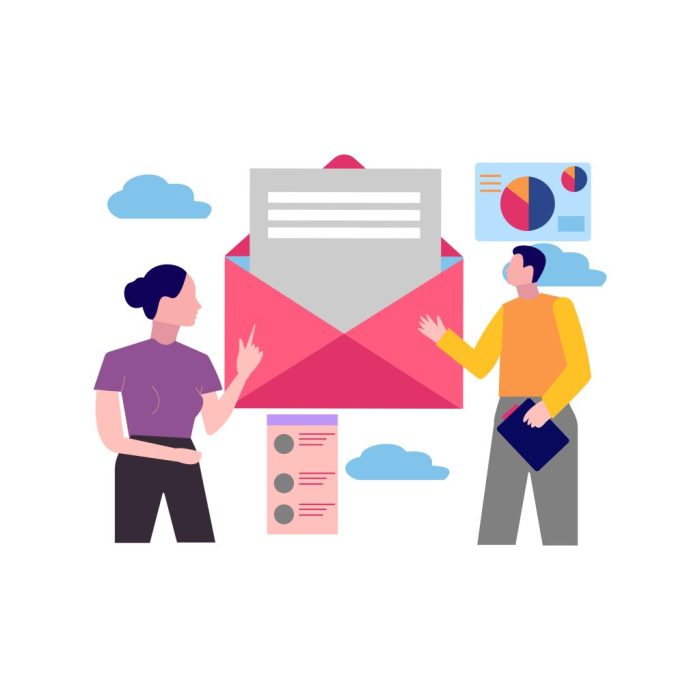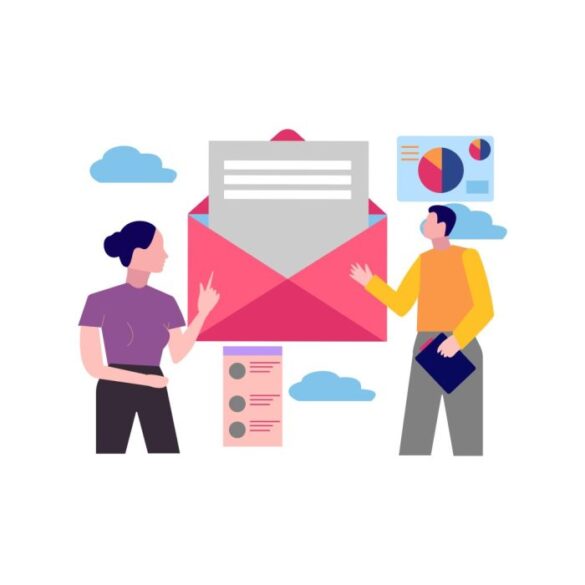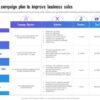A guide to creating successful business to consumer email marketing lays out a comprehensive strategy for maximizing your email campaigns. This in-depth guide explores everything from crafting compelling subject lines to building a targeted email list, optimizing deliverability, and tracking performance. Learn how to use email to engage your customers, nurture leads, and drive conversions.
Discover how to define email marketing success, create engaging content, and integrate your email strategy with other marketing channels. Unlock the secrets to building a thriving business-to-consumer relationship through effective email campaigns.
Defining Email Marketing Success
Email marketing, when done right, can be a powerful tool for driving business growth. However, simply sending emails isn’t enough. Success hinges on a strategic approach, measurable results, and a deep understanding of your audience. This section will delve into the core components of a successful business-to-consumer email marketing campaign.A successful business-to-consumer email marketing campaign is one that consistently achieves its predefined goals, ultimately contributing to overall business objectives.
This includes not just increasing sales but also nurturing customer relationships, building brand awareness, and driving engagement. Key indicators of success are quantifiable and directly tied to specific actions taken by recipients.
Key Metrics of Email Marketing Success
Defining success relies heavily on measurable data. Open rates, click-through rates, and conversion rates are crucial metrics. Open rates reflect recipient interest in the content. Click-through rates reveal how compelling the email’s call to action is. Conversion rates show how effectively the email leads to desired actions, such as purchases or sign-ups.
Tracking these metrics allows for continuous improvement and a clear understanding of what resonates with the target audience. Crucially, these metrics must be viewed within the broader context of the campaign’s objectives.
Alignment with Business Objectives
Successful email marketing campaigns are intrinsically linked to the overall business strategy. They should directly support and contribute to achieving broader business goals. For example, a campaign aimed at launching a new product should have clear conversion goals, like achieving a specific number of pre-orders or generating a particular amount of leads. Defining these specific objectives allows for targeted campaigns that can be measured against the overarching business strategy.
The Role of Customer Segmentation
Customer segmentation is vital for tailoring email content and maximizing campaign effectiveness. Segmenting recipients based on demographics, purchase history, or engagement levels allows for personalized messaging. This personalization increases the likelihood of recipients engaging with the email, ultimately leading to better campaign results. For instance, sending promotional offers to customers who have shown interest in specific products, or providing relevant educational content to those who have engaged in previous webinars.
Types of Email Marketing Campaigns and Their Metrics
Different types of email campaigns have distinct goals and success metrics. The table below provides a comparative overview:
| Campaign Type | Primary Goal | Key Success Metrics |
|---|---|---|
| Promotional | Driving sales and increasing revenue | Conversion rate, click-through rate, revenue generated, average order value |
| Transactional | Providing timely and relevant information | Delivery rate, open rate, completion rate (e.g., order confirmation) |
| Educational | Building brand awareness and establishing expertise | Open rate, click-through rate, website traffic, lead generation |
Promotional campaigns focus on short-term gains, like sales or promotions, and track their effectiveness through conversions and revenue. Transactional emails, such as order confirmations or password resets, focus on timely communication and measure success through delivery rates and completion rates. Educational campaigns aim to build brand authority and attract leads, using metrics like open and click-through rates and website traffic as indicators of success.
Crafting a killer business-to-consumer email marketing strategy is key for boosting sales. Understanding the ever-evolving digital landscape is crucial, and thankfully, resources like ever evolving digital marketing agency toolkit provide a wealth of knowledge. This helps you stay ahead of the curve and ensure your emails are not only effective but also engaging. Ultimately, a robust email marketing strategy is vital for any business aiming for success in the digital marketplace.
Each type requires different strategies to achieve optimal results.
Crafting Compelling Email Subject Lines
Subject lines are the first impression your email makes. They determine whether your message gets opened or ignored. Crafting compelling subject lines that accurately reflect the email’s content and pique recipient interest is crucial for successful email marketing. A well-crafted subject line can significantly boost open rates, leading to higher engagement and conversions.Effective subject lines are concise, engaging, and relevant to the recipient.
They clearly communicate the email’s purpose without being overly promotional or misleading. A good subject line immediately conveys the value proposition of the email, enticing the recipient to open it.
Compelling Subject Line Examples
A strong subject line directly communicates the email’s content and value. Crafting subject lines that accurately reflect the email’s content is key to increasing open rates. This section presents examples of effective subject lines for various email campaigns.
- Promotional Email: “Exclusive Offer: 20% Off Your Next Order”
- Informational Email: “New Product Alert: Introducing the Eco-Friendly Backpack”
- Abandoned Cart Email: “Don’t Miss Out! Items Waiting in Your Cart”
- Newsletter Email: “Weekly Dose of Inspiration: Top 5 Design Trends”
- Welcome Email: “Welcome to the Family! Your Exclusive Gift Awaits”
Personalization in Subject Lines
Personalization significantly improves email open rates. Tailoring subject lines to individual recipient preferences and behaviors can significantly increase engagement. By addressing recipients by name or referencing past interactions, you demonstrate a personal touch, making the email feel more relevant.
- Example: Instead of “New Product Alert,” use “Sarah, Introducing the Eco-Friendly Backpack.”
A/B Testing Subject Lines
A/B testing subject lines is a vital strategy for optimizing performance. Testing different subject line variations against a control group allows you to identify which subject lines resonate most effectively with your audience. This data-driven approach helps you refine your subject line strategy over time.
- Strategy: Create variations of your subject line, like using different tones (formal, informal), lengths (short, long), and even different emojis. Track which variation generates the highest open rates.
Urgency and Curiosity in Subject Lines
A sense of urgency or curiosity can entice recipients to open your emails. Using time-sensitive language or posing intriguing questions can create a sense of anticipation. Creating a sense of scarcity or excitement is crucial for motivating recipients to take action.
- Example: “Limited-Time Offer: Free Shipping on Orders Over $50”
- Example: “Ready to Boost Your Productivity? Discover Our Top 3 Tips”
Effective vs. Ineffective Subject Lines
Analyzing successful and unsuccessful subject lines provides valuable insights into crafting effective subject lines. Learning from both effective and ineffective examples helps refine your approach. Understanding what works and what doesn’t can optimize your future campaigns.
| Effective Subject Line | Ineffective Subject Line | Reason |
|---|---|---|
| “Exclusive Offer: 20% Off Your Next Order” | “New Product Alert” | The first subject line clearly communicates the value proposition. The second is generic and doesn’t highlight the incentive. |
| “Sarah, Introducing the Eco-Friendly Backpack” | “New Backpack Available” | Personalization significantly enhances the subject line’s impact. The generic subject line lacks personalization and connection. |
Structuring Engaging Email Content
Crafting compelling email content is crucial for driving engagement and achieving your marketing goals. A well-structured email not only conveys your message effectively but also leaves a positive impression on your recipients. Beyond the subject line, the email body’s structure and content play a significant role in capturing attention and inspiring action.Effective email content requires careful consideration of clarity, conciseness, and readability.
A reader should be able to quickly grasp the message and easily understand the call to action. This means avoiding jargon and overly complex language.
Email Template for a New Product Launch
A successful new product launch email should be designed to excite and inform. The template should include key sections to capture the reader’s attention and encourage purchase. A good structure typically includes a compelling introduction, a detailed description of the product, highlighting its key features and benefits, visuals to showcase the product, a clear call to action, and a closing section to reinforce the message.
- Headline: A concise and captivating headline that immediately grabs the reader’s attention and highlights the new product.
- Introduction: Briefly introduce the new product and its purpose. Emphasize the problem it solves and the value it brings to the customer.
- Detailed Description: Provide a comprehensive description of the product, outlining its key features and benefits. Use bullet points and clear language to highlight key advantages.
- Visuals: Include high-quality images or videos showcasing the product from different angles. This helps build interest and trust.
- Social Proof (optional): Include testimonials, reviews, or case studies to demonstrate the product’s effectiveness and build credibility.
- Call to Action (CTA): Clearly state the desired action, whether it’s purchasing the product, learning more, or signing up for a demo. Use strong and compelling language in the CTA button.
- Closing: Thank the reader for their interest and provide a final message reinforcing the value proposition of the product. Consider offering an exclusive discount or bonus for early adopters.
Compelling Email Body Elements
An engaging email body goes beyond just presenting information; it should create an experience. Clarity, conciseness, and readability are essential. Avoid overwhelming the reader with lengthy paragraphs and complex sentences. Break up text with headings, subheadings, bullet points, and white space to improve readability.
- Clarity: Use simple, straightforward language to convey your message clearly. Avoid jargon or technical terms that might confuse the reader.
- Conciseness: Get straight to the point. Eliminate unnecessary words and sentences to maintain reader interest.
- Readability: Use headings, subheadings, bullet points, and white space to make the email easy to scan and understand. Ensure proper font size and style for optimal readability.
Persuasive Language and Call-to-Actions
Persuasive language in emails should evoke emotion and encourage the desired action. The call to action (CTA) is crucial for driving conversions. The phrasing of the CTA should be clear and compelling. Tailor your language to the specific email type and target audience.
- Examples:
- Promotional Email: “Limited-time offer! Claim your discount now!”
- Newsletter: “Stay informed about the latest industry trends. Subscribe today!”
- Product Launch: “Pre-order now and be among the first to experience the new [product name]!”
Visuals in Email Marketing
High-quality visuals can significantly enhance email engagement. Images and videos can make the email more appealing and help to convey complex information effectively. Use visuals strategically to support your message and create a memorable experience. Select images relevant to the content and ensure they are optimized for email display.
- Impact: Visually engaging content can increase open and click-through rates. Images and videos can convey information quickly and effectively.
- Considerations: Ensure images are optimized for email clients and avoid using overly large files to prevent slow loading times.
Content Types in Email Marketing
Different content types can be used to create engaging and informative emails. A combination of text, images, videos, and links can help create a more dynamic and engaging experience.
| Content Type | Description | Impact |
|---|---|---|
| Text | Core message and supporting details | Provides essential information |
| Images | Visual representation of products or concepts | Enhances engagement and understanding |
| Videos | Dynamic demonstrations or explanations | Creates a more immersive experience |
| Links | Navigation to external resources or internal pages | Provides further information or enables action |
Building a Targeted Email List
Building a robust email list is crucial for any business aiming to connect with its customers effectively. It’s more than just gathering addresses; it’s about nurturing a community of engaged individuals who are genuinely interested in your offerings. This section dives into best practices for cultivating a thriving email list, ensuring ethical and legal compliance, and maximizing the potential of each subscriber.Building a targeted email list isn’t a one-time task.
It’s an ongoing process that requires consistent effort and a keen understanding of your audience. The more you understand your customers, the more effectively you can tailor your messages, leading to higher engagement and ultimately, increased conversions.
Ethical and Legal Email Collection
Collecting email addresses ethically and legally is paramount. Complying with regulations like GDPR (General Data Protection Regulation) and CAN-SPAM Act is essential to avoid penalties and maintain trust with your subscribers. Transparency is key; clearly communicate how you will use their data and provide an easy opt-out mechanism. Explicit consent is vital; subscribers should actively choose to receive your emails.
Methods for Growing Your Email List
Several methods can help you expand your email list effectively. Employing a variety of strategies will increase the number of subscribers, ensuring your outreach has a wider reach.
- Signup Forms: Strategically placed signup forms on your website, landing pages, and product pages are crucial. The form design should be user-friendly, minimizing the required fields to encourage sign-ups. Consider offering incentives like exclusive content or discounts to entice visitors to subscribe.
- Lead Magnets: Offering valuable resources in exchange for email addresses is a powerful strategy. These “lead magnets” could be ebooks, checklists, webinars, or templates. This approach targets a specific need or desire, attracting individuals interested in the content.
- Social Media: Leveraging social media platforms can significantly increase your email list. Promote your signup form on relevant platforms and engage with potential subscribers by hosting contests or giveaways.
Segmenting Your Email List
Segmentation allows for personalized communication, significantly enhancing engagement. Dividing your subscribers into specific groups based on shared characteristics, behaviors, or interests enables targeted messaging. This targeted approach fosters a deeper connection with each subscriber and increases the likelihood of them engaging with your emails.
- Demographics: Categorize subscribers based on factors like location, age, or profession. This allows for tailored promotions and recommendations.
- Interests: Segment subscribers based on their expressed interests in specific products or services. This enables the delivery of relevant content and promotions.
- Purchase History: Segment subscribers based on past purchases. This allows for follow-up emails with personalized recommendations or special offers.
List Hygiene and Inactive Subscribers
Maintaining a healthy email list is crucial. Regularly removing inactive subscribers prevents your emails from being marked as spam and maintains a high deliverability rate. It also ensures that your emails reach engaged recipients. Implementing a system to manage inactive subscribers protects your sender reputation.
- Regularly review and purge inactive subscribers: Set a timeframe for inactivity (e.g., 90 days without engagement). This helps keep your list clean and efficient.
- Implement a double opt-in process: This verifies that subscribers genuinely want to receive your emails, reducing the number of inactive or invalid addresses.
- Use email marketing tools with built-in list hygiene features: These tools can automatically identify and remove inactive subscribers, saving you time and effort.
Designing a Compelling Signup Form
The signup form acts as the first impression. Its design significantly influences the number of subscribers. An attractive and easy-to-use form will encourage visitors to subscribe.
| Element | Description |
|---|---|
| Clear Value Proposition: | Highlight the benefit of subscribing (e.g., exclusive content, early access). |
| Concise Form: | Keep the form short and focused, requesting only essential information. |
| Visually Appealing Design: | Use a visually appealing design that aligns with your brand identity. |
Optimizing Email Deliverability
Reaching your audience’s inbox, not the spam folder, is crucial for email marketing success. A high deliverability rate ensures your messages are seen, and your campaigns have a tangible impact. This section dives into the strategies for ensuring your emails reach their intended destinations.Email deliverability isn’t just about sending; it’s about maintaining a positive sender reputation. A healthy reputation directly influences your email’s likelihood of reaching the inbox.
Poor deliverability can result in reduced open and click-through rates, ultimately hindering your marketing goals. This means your efforts, from crafting compelling subject lines to building a targeted list, could be wasted if emails end up in the spam folder.
Email Deliverability Issues and Solutions
Deliverability problems often stem from sender reputation, server configurations, or content quality. Understanding these issues and their solutions is key to a successful email marketing strategy.
A guide to creating successful business-to-consumer email marketing needs a strong foundation. Crucially, this involves developing your content marketing strategy, like the one outlined in this helpful resource: developing your content marketing strategy. By crafting compelling content, you can nurture leads and build stronger relationships with your audience, ultimately boosting email open and click-through rates. This, in turn, will significantly improve the effectiveness of your overall email marketing strategy.
- Spam Filters: Spam filters are designed to identify and filter unwanted emails. Common triggers include poor subject lines, irrelevant content, excessive use of marketing terms, or high bounce rates.
- High Bounce Rates: High bounce rates indicate a high percentage of emails that can’t be delivered to their intended recipients. This could be due to invalid email addresses, full mailboxes, or server issues. Solutions include verifying email lists and using email validation services to eliminate invalid addresses.
- Poor Sender Reputation: A poor sender reputation is a result of repeated issues like high bounce rates, spam complaints, or abuse reports. This is an ongoing issue that requires vigilance. Maintaining a positive sender reputation requires adhering to email best practices and promptly addressing any problems.
- Technical Issues: Problems with email server configurations can lead to deliverability issues. Technical problems, like server misconfigurations or IP address reputation, can result in your emails being blocked. Maintaining accurate SPF, DKIM, and DMARC records is essential.
Email Best Practices for Maintaining a Good Sender Reputation
Following email best practices is paramount to building a positive sender reputation. Consistency and ethical practices are crucial.
- Consistent Sending Practices: Avoid sending emails sporadically or in large volumes. Maintain a consistent sending schedule and volume to avoid alarming spam filters.
- High-Quality Content: Provide valuable, engaging content that aligns with the interests of your subscribers. Avoid deceptive practices or content that might trigger spam filters.
- Permission-Based Email Marketing: Always obtain explicit permission from recipients before sending them emails. This builds trust and avoids sending unsolicited messages.
- Honesty and Transparency: Clearly label your emails and disclose your identity. Avoid using deceptive subject lines or misleading content.
Email Authentication Protocols (SPF, DKIM, DMARC), A guide to creating successful business to consumer email marketing
These protocols are crucial for verifying your email’s authenticity and preventing spoofing. They help email providers identify legitimate emails and keep them out of spam folders.
- SPF (Sender Policy Framework): This protocol allows email providers to verify that your email server is authorized to send emails on behalf of your domain. It helps prevent spammers from forging your domain’s sender address.
- DKIM (DomainKeys Identified Mail): This protocol uses digital signatures to verify the integrity of your email messages. It ensures that the email hasn’t been tampered with during transit.
- DMARC (Domain-based Message Authentication, Reporting & Conformance): This protocol builds on SPF and DKIM by providing a way to report and act on authentication failures. DMARC helps to catch emails that fail authentication checks.
Tracking and Analyzing Email Campaign Performance
Understanding email campaign performance is crucial for optimization and growth. Monitoring key metrics allows you to identify what’s working, what’s not, and adjust your strategy accordingly. This data-driven approach ensures your emails are reaching the right audience and achieving desired outcomes.Email marketing isn’t a set-it-and-forget-it endeavor. Regular analysis is essential to adapt to changing trends and audience preferences.
Crafting a winning business-to-consumer email strategy takes more than just sending out newsletters. Understanding key metrics like open rates, click-through rates, and conversion rates is crucial. To truly connect with your audience and optimize your campaigns, delve into the 9 metrics for customer engagement, like bounce rates and unsubscribe rates, 9 metrics for customer engagement.
This knowledge is invaluable for fine-tuning your email marketing approach and boosting customer interaction, leading to a more effective and engaging business-to-consumer email marketing strategy.
By consistently tracking and interpreting key performance indicators (KPIs), you can refine your approach, improve engagement, and ultimately boost conversions.
Key Email Marketing Metrics
Email marketing metrics provide insights into campaign effectiveness. Understanding these metrics is fundamental to assessing campaign performance and identifying areas for improvement.
- Open Rate: The percentage of recipients who opened your email. A high open rate indicates your subject line is engaging and your email is relevant to the recipient.
- Click-Through Rate (CTR): The percentage of recipients who clicked on a link within your email. A high CTR signifies that your email content is compelling and encourages interaction.
- Conversion Rate: The percentage of recipients who completed a desired action, such as making a purchase or signing up for a webinar. This is a crucial metric, reflecting the ultimate goal of your email campaign.
- Bounce Rate: The percentage of emails that couldn’t be delivered. High bounce rates often point to issues with email addresses, spam filters, or sender reputation.
- Unsubscribe Rate: The percentage of recipients who opted out of receiving your emails. While some unsubscribes are inevitable, a consistently high rate warrants investigation into your email content or frequency.
- Spam Complaints: The percentage of recipients who marked your emails as spam. A high spam complaint rate severely impacts sender reputation and deliverability.
Using Analytics to Improve Campaigns
Email marketing analytics are your roadmap to a more effective strategy. Data visualization tools and reports offer a clear view of campaign performance.
- Segment your audience based on engagement. For example, send targeted emails to users who haven’t opened emails in a while, offering incentives or special deals. This segment-specific approach can significantly improve your open and click-through rates.
- A/B test different subject lines, email content, and calls to action. This iterative approach lets you see what resonates best with your audience. For instance, test different headlines or offer various incentives to identify the most effective approach.
- Track the performance of different marketing channels. For instance, compare email performance against social media promotions or paid advertising. This cross-channel analysis helps you allocate resources efficiently.
Identifying and Addressing Areas for Improvement
Identifying weaknesses in your email marketing strategy is vital for growth. Regular review and analysis lead to better campaigns.
- Analyze your open, click-through, and conversion rates across various campaigns. Identify trends in performance based on specific segments of your email list or the subject matter of the email.
- Identify subject lines that consistently perform poorly. Examine the language, tone, and relevance of these subject lines, then adjust them to better capture recipient interest.
- Look at the emails that have the highest unsubscribe rates. Consider the content of these emails to find areas for improvement in your approach, such as better segmentation or more targeted content.
Email Marketing Campaign Performance Report Template
A well-structured report template streamlines analysis. This example includes essential metrics.
| Metric | Current Campaign | Previous Campaign | Analysis |
|---|---|---|---|
| Open Rate | 25% | 22% | Improved due to updated subject line strategy. |
| Click-Through Rate | 10% | 8% | Positive trend. Further A/B testing recommended. |
| Conversion Rate | 3% | 2.5% | Increased conversions. Maintain current approach. |
| Bounce Rate | 1.5% | 2% | Positive trend. |
| Unsubscribe Rate | 0.8% | 1% | Low unsubscribe rate. Maintain current strategy. |
Regular Testing and Optimization
Regular testing and optimization are crucial for maintaining campaign effectiveness. This iterative approach adapts to changing audience preferences.
- A/B testing is essential. Experiment with different subject lines, email content, and calls to action to discover what works best.
- Analyze the results and adjust campaigns based on the findings. This iterative process is key to continuous improvement.
- Monitor trends and adapt to changing audience preferences and market conditions. For example, if a specific product line becomes less popular, reflect this in your email marketing strategy.
Integrating Email Marketing with Other Channels
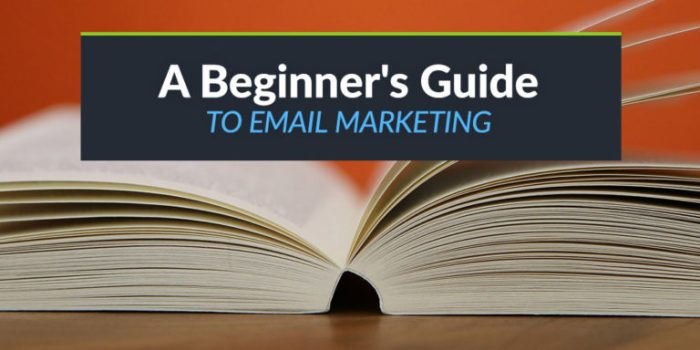
Email marketing isn’t a siloed activity. Its power multiplies when integrated with other channels, creating a cohesive customer journey that resonates more deeply. By seamlessly connecting email with social media, your website, and other online touchpoints, you can nurture leads effectively, drive conversions, and build stronger, lasting relationships with your audience.Integrating email and other channels allows for a more comprehensive customer experience.
This approach ensures consistent messaging and strengthens brand recognition, ultimately boosting your overall marketing ROI. By utilizing a multi-channel strategy, you can leverage the strengths of each platform to create a unified customer experience, and thus increase engagement and conversions.
Integrating Email Marketing with Social Media Marketing
Social media and email marketing can amplify each other’s strengths. Social media provides a platform for building community and engagement, while email allows for targeted communication and detailed information. A key integration strategy is to encourage social sharing of valuable content and promote email sign-ups directly on social media platforms.
- Social Media Contests and Giveaways: Run contests or giveaways on social media platforms, incentivizing users to enter by providing their email address. This is a great way to collect new email addresses.
- Social Media Ads and Email Sign-Ups: Use social media advertising to promote your email newsletter or specific offers. Target your ads to specific demographics and interests to maximize the effectiveness of your campaign.
- Content Promotion: Share compelling content from your blog or website on social media, and include a call to action encouraging followers to subscribe to your email list for more insights.
- Social Proof and Testimonials: Use social media to highlight customer testimonials and reviews. Include links to these posts within your email campaigns to reinforce trust and build credibility.
Integrating Email Marketing with Your Website and Other Online Channels
Your website and other online channels should seamlessly integrate with your email marketing strategy. A key principle is to use your website to drive traffic to your email marketing signup pages, and use email to drive traffic to your website.
- Website Pop-ups and Forms: Implement website pop-ups and forms to capture visitor information and encourage sign-ups for your email list. Ensure the forms are unobtrusive and offer clear value to incentivize visitors.
- Landing Pages for Email Campaigns: Create dedicated landing pages to promote specific email campaigns, making the experience clear and concise.
- Email Links in Website Content: Strategically place email signup links within relevant website content, including blog posts, product pages, and service descriptions.
- Retargeting Campaigns: Use retargeting ads to remind website visitors of your brand and offer a special offer through email.
Nurturing Leads and Driving Conversions with Email
Email marketing is a powerful tool for nurturing leads and driving conversions. By providing valuable content and personalized communication, you can guide prospects through the sales funnel, ultimately converting them into customers.
- Lead Nurturing Sequences: Create automated email sequences that deliver targeted content to leads based on their stage in the buying cycle. This approach allows you to provide valuable information without being intrusive.
- Personalized Recommendations: Leverage customer data to tailor email content to their specific interests and needs. This can increase engagement and conversion rates.
- Special Offers and Promotions: Email campaigns are an excellent channel to announce exclusive deals and discounts, boosting conversions.
Building Stronger Customer Relationships with Email
Email is a powerful tool for fostering stronger customer relationships. By consistently providing value and engaging with your subscribers, you can cultivate loyalty and drive repeat business.
- Personalized Welcome Emails: Send a welcome email to new subscribers, providing a brief overview of your brand and outlining how they can benefit from your offerings.
- Regular Updates and News: Provide your subscribers with valuable content such as industry insights, company news, and behind-the-scenes looks.
- Customer Feedback and Surveys: Use email to solicit customer feedback and conduct surveys to better understand their needs and preferences.
- Exclusive Content and Perks: Reward loyal customers with exclusive content, early access to sales, or other special perks.
Examples of Successful Email Marketing Integrations
Numerous businesses successfully integrate email marketing with other channels. One example is a company that runs social media contests to generate email sign-ups, which they then nurture through automated email sequences tailored to different customer segments. This targeted approach has demonstrably increased their conversion rates and customer lifetime value.
Summary: A Guide To Creating Successful Business To Consumer Email Marketing
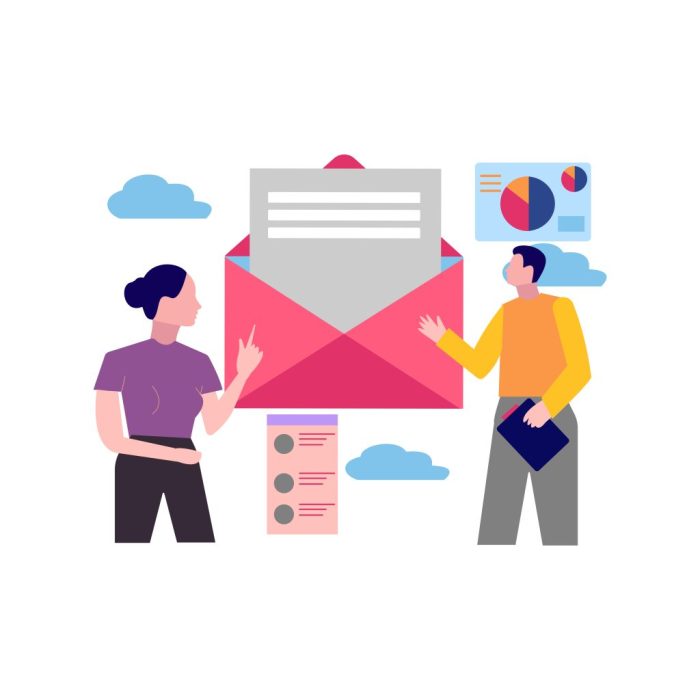
In conclusion, a successful business-to-consumer email marketing strategy requires a multifaceted approach. By understanding key metrics, crafting compelling content, building a targeted list, optimizing deliverability, and analyzing performance, you can significantly boost your results. This guide provides a roadmap to help you achieve these goals, transforming your email marketing from a task into a powerful engine for growth.
Ultimately, this guide empowers you to connect with your customers on a deeper level, fostering stronger relationships and driving remarkable business outcomes through well-executed email campaigns.

